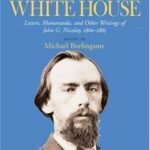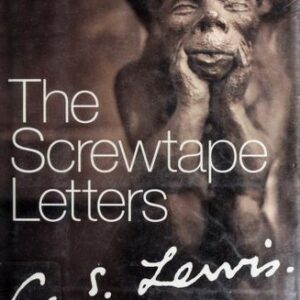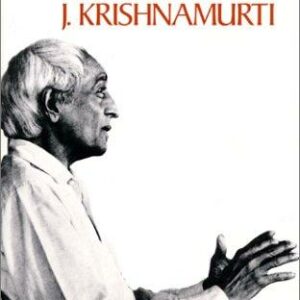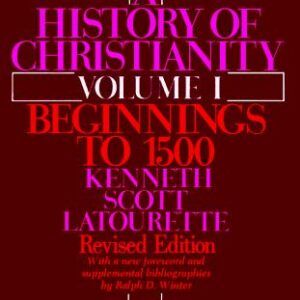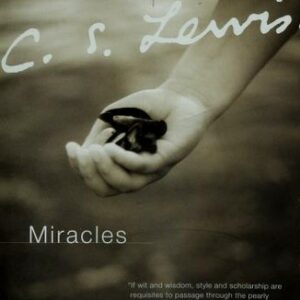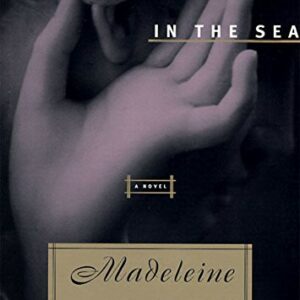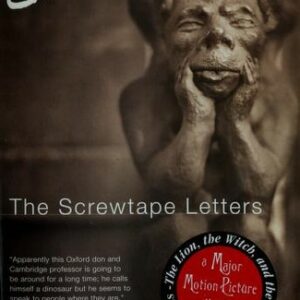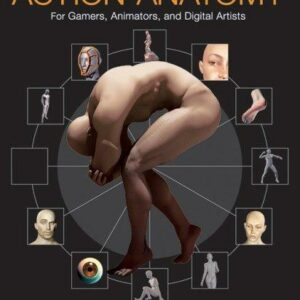With Lincoln in the White House
$28.00
| Title | Range | Discount |
|---|---|---|
| Trade Discount | 5 + | 25% |
- Description
- Additional information
Description
From the time of Lincoln’s nomination for the presidency until his assassination, John G. Nicolay served as the Civil War president’s chief personal secretary. Nicolay became an intimate of Lincoln and probably knew him as well as anyone outside his own family. Unlike John Hay, his subordinate, Nicolay kept no diary, but he did write several memoranda recording his chief’s conversation that shed direct light on Lincoln. In his many letters to Hay, to his fiancée, Therena Bates, and to others, Nicolay often describes the mood at the White House as well as events there. He also expresses opinions that were almost certainly shaped by the presidentFor this volume, Michael Burlingame includes all of Nicolay’s memoranda of conversations, all of the journal entries describing Lincoln’s activities, and excerpts from most of the nearly three hundred letters Nicolay wrote to Therena Bates between 1860 and 1865. He includes letters and portions of letters that describe Lincoln or the mood at the White House or that give Nicolay’s personal opinions. He also includes letters written by Nicolay while on troubleshooting missions for the president.An impoverished youth, Nicolay was an unlikely candidate for the important position he held during the Civil War. It was only over the strong objections of some powerful people that he became Lincoln’s private secretary after Lincoln’s nomination for the presidency in 1860. Prominent Chicago Republican Herman Kreismann found the appointment of a man so lacking in savoir faire “ridiculous.” Henry Martin Smith, city editor of the Chicago Tribune, called Nicolay’s appointment a national loss. Henry C.Whitney was surprised that the president would appoint a “nobody.”
Lacking charm, Nicolay became known at the White House as the “bulldog in the ante-room” with a disposition “sour and crusty.” California journalist Noah Brooks deemed Nicolay a “grim Cerberus of Teutonic descent who guards the last door which opens into the awful presence.” Yet in some ways he was perfectly suited for the difficult job. William O. Stoddard, noting that Nicolay was not popular and could “say ‘no’about as disagreeably as any man I ever knew,” still granted that Nicolay served Lincoln well because he was devoted and incorruptible. Stoddard concluded that Nicolay “deserves the thanks of all who loved Mr. Lincoln.”For his part, Nicolay said he derived his greatest satisfaction “from having enjoyed the privilege and honor of being Mr. Lincoln’s intimate and official private secretary, and of earning his cordial friendship and perfect trust.” Michael Burlingame is the May Buckley Sadowski Professor of History at Connecticut College. His previous books include Inside Lincoln’s White House: The Complete Civil War Diary of John Hay (coedited with John R. Turner Ettlinger); Lincoln’s Journalist: John Hay’s Anonymous Writings for the Press, 1860–1864; At Lincoln’s Side: John Hay’s Civil War Correspondence and Selected Writings, and AnOral History of Abraham Lincoln: John G. Nicolay’s Interviews and Essays, whichwon the 1995 Abraham Lincoln Association Prize.
Lincoln’s CorrespondenceBetween Abraham Lincoln’s acceptance of the Republican Party presidential nomination in May 1860 and his death in April 1865, he received thousands of letters. These letters came from a variety of sources ordinary citizens, political leaders, friends, and family. Many of these letters survived and are housed in private collections, historical societies, and national libraries and archives. As President, Lincoln had funds for only a private secretary; the assistant secretary and other clerks came from appointments made to other federal departments, who were then assigned to duty at the White House. Three related books, Harold Holzer’s Dear Mr. Lincoln, The Lincoln Mailbag and Michael Burlingame’s With Lincoln in the White House, give us a glimpse into the letters received by Lincoln and a unique look at the presidency through the eyes of his secretary John G. Nicolay.Harold Holzer’s Dear Mr. Lincoln and The Lincoln Mailbag both contain a selection of the letters received by Lincoln during his presidency. The men responsible for handling the daily mail included his private secretary, John G. Nicolay, John M. Hay, William Osborne Stoddard, and Edward Duffield Neill. Nicolay was a German immigrant born near Landau in Rhenish Bavaria on February 26, 1832. He immigrated to the United States around 1838 and spent his youth in Indiana, Illinois, and Missouri. Nicolay received little formal education and worked for eight years at the Free Press in Pittsfield, Illinois. He met Lincoln while clerking for Ozias Hatch, the Illinois Secretary of State from 1857 to 1860. After Lincoln’s election, Nicolay went to Washington to serve as Lincoln’s private secretary, a decision that surprised many of Lincoln’s colleagues. John M. Hay, a close friend of Nicolay’s, assumed his position as Lincoln’s assistant private secretary. William Stoddard was a journalist and editor of the Central Illinois Gazette, who served as a clerk to Hay and Nicolay. When illness forced him to resign, Stoddard was replaced by Edward Duffield Neill, a former minister and historian from Minnesota.The recollections of each of these men regarding mail handling procedures and the amount received daily vary. A typical day’s mail ranged from 250 to 500 pieces, a mere fraction of what the White House receives today. However, it is a substantial amount when one considers the population of the United States in 1860 and the fact that very little correspondence originated in the seceded states. Lincoln’s secretaries and their clerk had an enormous amount of power with regard to handling his mail. They had authority to “summarize, forward, re-route, or destroy” letters and Lincoln never challenged their decisions (Mailbag, p. xxvii). In all, less than one dozen letters per day made it to Lincoln’s desk for his personal attention and reply.Holzer’s experience as a press officer for New York Governor Mario Cuomo served as the inspiration for Dear Mr. Lincoln: Letters to the President, originally published in 1993. The letters Cuomo received while contemplating a run for the presidency led Holzer to wonder about the mail President Abraham Lincoln received while in office. Initial research revealed that no one had published a collection of this kind. This work was the first to examine letters sent to Lincoln and provided only a sample of the letters available. This initial work includes letters from the Abraham Lincoln Papers located at the Library of Congress and others from collections at museums, historical societies, libraries, and private collectors; a complete list of the collections consulted follows the bibliography. Dear Mr. Lincoln also contains an extensive introduction that describes Lincoln’s secretaries and the handling of the daily mail in the Lincoln White House.This collection reveals the American fascination with politics during the mid-1800s. Citizens in Washington, D.C. and the rest of the country paid visits to the White House to seek patronage posts, to visit with Lincoln, and to share their thoughts on public affairs. Others opted to write letters to the president instead. The items selected for this collection include “contemplative tomes on the weighty issues of union, race, war, and peace to the most minor and frivolous requests for favors, pardons, and even payments of money” (4-5). The letters are arranged into ten different categories including: advice, requests, compliments, inventions, gifts, official business, invitations, family matters, and threats and warnings. Each chapter is preceded by a prologue providing a brief background setting for the letters and recollections from the various secretaries. Sources for each prologue are located at the end of the book before the bibliography.Each entry contains a subtitle that provides a subject for the letter, followed by the text of the letter. The editor opted to use limited editing and comments regarding their contents. The greetings and salutations which in many cases were excessive were edited to conform to today’s brief writing styles. If the president replied then a copy of his letter follows, other notations include that no reply is known or other comments that readers might find informative. In addition the entry indicates if the letter was confidential or a telegram. Rather than use footnotes, the author opted to use in text references to the various resources mentioned in either the letters or the descriptive notes. Each of these sources can be found in the seven page bibliography located at the end of the book. Readers will also find the index to be a useful tool for locating letters by or mentioning a specific individual.Holzer’s first collection of letters to Lincoln led to the publication of The Lincoln Mailbag. Another inspiration was Ira Berlin’s Freedom: A Documentary History of Emancipation, 1861-1867: Selected from the Holdings of the National Archives of the United States (1990). Berlin’s work provided the impetus for Holzer to include letters from African Americans to Lincoln. During his administration, Lincoln never saw these letters; instead his secretaries forwarded them to the Bureau of Colored Troops under the jurisdiction of the War Department. Today these letters can be found at the National Archives within the collections of the Military Reference Branch. For The Lincoln Mailbag (1998), Holzer chose letters that reflected citizen sentiment during the Civil War. Letters selected came from a wide variety of sources, including personal collections; the Abraham Lincoln Papers at the Library of Congress; the previously mentioned Military Reference Branch collections at the National Archives, the Minnesota Historical Society; the Lincoln Museum in Fort Wayne, Indiana; the Chicago Historical Society; and the Illinois State Historical Library, recently renamed the Abraham Lincoln Presidential Library. Many letters Holzer included were sent to him upon publication of his first book for inclusion in any further collections. Holzer’s current book is an annotated selection of letters, some never before published, including those that never made it to Lincoln’s desk. Each entry is accompanied by an annotation providing a context for the letter and details about any people and/or events mentioned in its text. Topics include inquiries from slaves about the status of their freedom, pleas for political appointments, requests for autographs and photographs, letters from people claiming family ties to Lincoln, and invitations to attend events. Some of the more unusual topics include advice on how to fight the war and letters from mystics that foretold the future. The letters in this collection are arranged in chronological order offering at least one letter for each month, including the months leading up to the March 1861 inauguration. Each letter is reprinted in its original state with few editorial changes. Spelling errors are not corrected and the editorial “sic” is seldom used. Likewise, punctuation and underlining is retained from the original manuscripts. Details about events and important personages are included in bracketed comments. Information regarding the source of the letter follows the editorial notes and a copy of Lincoln’s reply is included if it could be located. Lincoln’s letters also appear in their original form without editorial corrections. Due to the excessive length and wordiness of some of the salutations and addresses on some letters, Holzer opted to standardize and shorten selected letters. The source of each letter is indicated with the exception of those originating from the Abraham Lincoln Papers at the Library of Congress.The single difference between the cloth edition of this title published in 1998 and the recently published paperback edition is the index. The author has added an index to the paperback edition making it easier to locate the correspondence of a particular individual. Similar resources containing letters to Lincoln include David Herbert Donald’s Lincoln at Home: Two Glimpses of Abraham Lincoln’s Family Life (2000). This brief work, inspired by a talk the author presented during the Presidential Lecture Series in 1990, contains a forty-page chapter on the Lincolns in the White House and a selection of letters from Abraham Lincoln, Mary Todd Lincoln and their eldest son, Robert Todd Lincoln that date from 1848 until 1865. These letters focus on the domestic life of the president; Donald’s volume marks the first time that all of the letters from the three persons have been published in one volume. One can also access the family members’ letters separately. Lincoln’s letters were published in the nine-volume Collected Works of Abraham Lincoln edited by Roy P. Basler, et al (1953-55). Mary Todd Lincoln’s letters are found in Justin C. and Linda Levitt Turner’s edited collection Mary Todd Lincoln: Her Life and Letters (1972). The letters of Robert Todd Lincoln have not been published to date, although some of his letters can be found in the Abraham Lincoln Papers and the Illinois Historical Association collections. The Abraham Lincoln Papers at the Library of Congress date from 1833 through 1916 and contain around twenty thousand items. The majority of the collection are from 1850 through 1865 and contain “letters written to Lincoln by a wide variety of correspondents: friends, and legal and political associates from Lincoln’s Springfield, Illinois, days; national and regional political figures and reformers; local people and organizations writing to their president.”[1] This collection is digitized and searchable by keyword and topic via the American Memory Collection on the Library of Congress web site.Michael Burlingame’s latest contribution to Lincoln scholarship, With Lincoln in the White House: Letters, Memoranda, and Other Writings of John G. Nicolay, 1860-1865, offers a rare glimpse into the life of the president through the writings of his secretary. John George Nicolay became Lincoln’s secretary in 1860, remaining in that position until Lincoln’s death in 1865. Nicolay did not keep a diary so the sources contained in this collection include “memoranda of conversations, all the journal entries describing Lincoln’s activities, and excerpts from most of the nearly 300 letters Nicolay wrote to his fiancée Therena Bates between 1860 and 1865″(p. xii). In addition the collection includes letters from the various troubleshooting missions undertaken by Nicolay at Lincoln’s request. Unlike Holzer’s compilation, this collection is a mixture of complete letters and portions of letters, depending upon the source.The letters came from a variety of sources. One of the primary collections is Helen Nicolay’s biography of her father, Lincoln’s Secretary: A Biography of John G. Nicolay (1949). In this biography, Helen Nicolay uses quotes from her father’s letters to tell his life story and to explain why his experiences made him the best person to compile Lincoln’s biography. In making this claim, Nicolay refers to the ten-volume biography Abraham Lincoln: A Biography (1890) compiled and co-authored by John Nicolay and John Hay. The two men had sole access to the Lincoln papers to compile an authorized biography through an arrangement with Robert Todd Lincoln. Other letters and memoranda in Burlingame’s volume came from Charles M. Segal’s Conversations with Lincoln (1961), Don and Virginia Fehrenbacher’s Recollected Words of Abraham Lincoln (1996), and Roy Basler’s Collected Works, Supplement (1975).Like Holzer, Burlingame chose to make few editorial changes to the original texts. Spelling errors and punctuation marks remain as in the original letter, unless a period fit the context instead of a comma. Words that could not be deciphered are indicated by brackets, with either a guess at the intended word with a question mark or a blank space. Editorial comments are indicated in brackets in italics. Information about people mentioned in the various letters can be found in the extensive endnotes. The endnotes contain a substantial amount of valuable information, including the source of each letter and related sources; however, these endnotes might be more useful if they accompanied the letters in either an annotation or a footnote. Nicolay’s writings describe life in Washington and at the White House. He makes observations about Lincoln’s visitors, his moods, and activities. His letters to Lincoln give detailed reports on special missions that he undertook for the president. Other items are memos in response to letters or inquiries made by military personnel and politicians. The bulk of this collection contains portions of letters from Nicolay to his fiancée. In his letters he tells her of the day-to-day details of his job, the political mood of the city, and how the war impacted Washington.Both works provide a fresh take on the period of the Civil War and on Abraham Lincoln. Each collection contains primary sources that have been previously published in other works in addition to letters never before published. Historians, researchers, and many others will find both works useful and interesting reading. The notes in both works provide a number of cross-references and mention related books that will be useful to researchers and students alike. Both works are highly recommended for addition to any library collection, particularly those specializing in Abraham Lincoln and the American Civil War.
“Lincoln scholars will feast on this book.”—John Y. Simon, executive director, Ulysses S. Grant Association
“Burlingame deserves thanks for making these important letters readily available to scholars and the general public.”—Journal of the Illinois State Historical Society
“Burlingame, who has blessed us with a series of edited volumes of papers from Lincoln’s White House circle, now brings together Nicolay’s papers, carefully selected and annotated in marvelous and useful detail. . . . With Lincoln in the White House is both editorially neat and brimming with glimpses into the very heart of the Lincoln Administration.”—The Civil War News
Lincoln’s CorrespondenceBetween Abraham Lincoln’s acceptance of the Republican Party presidential nomination in May 1860 and his death in April 1865, he received thousands of letters. These letters came from a variety of sources ordinary citizens, political leaders, friends, and family. Many of these letters survived and are housed in private collections, historical societies, and national libraries and archives. As President, Lincoln had funds for only a private secretary; the assistant secretary and other clerks came from appointments made to other federal departments, who were then assigned to duty at the White House. Three related books, Harold Holzer’s Dear Mr. Lincoln, The Lincoln Mailbag and Michael Burlingame’s With Lincoln in the White House, give us a glimpse into the letters received by Lincoln and a unique look at the presidency through the eyes of his secretary John G. Nicolay.Harold Holzer’s Dear Mr. Lincoln and The Lincoln Mailbag both contain a selection of the letters received by Lincoln during his presidency. The men responsible for handling the daily mail included his private secretary, John G. Nicolay, John M. Hay, William Osborne Stoddard, and Edward Duffield Neill. Nicolay was a German immigrant born near Landau in Rhenish Bavaria on February 26, 1832. He immigrated to the United States around 1838 and spent his youth in Indiana, Illinois, and Missouri. Nicolay received little formal education and worked for eight years at the Free Press in Pittsfield, Illinois. He met Lincoln while clerking for Ozias Hatch, the Illinois Secretary of State from 1857 to 1860. After Lincoln’s election, Nicolay went to Washington to serve as Lincoln’s private secretary, a decision that surprised many of Lincoln’s colleagues. John M. Hay, a close friend of Nicolay’s, assumed his position as Lincoln’s assistant private secretary. William Stoddard was a journalist and editor of the Central Illinois Gazette, who served as a clerk to Hay and Nicolay. When illness forced him to resign, Stoddard was replaced by Edward Duffield Neill, a former minister and historian from Minnesota.The recollections of each of these men regarding mail handling procedures and the amount received daily vary. A typical day’s mail ranged from 250 to 500 pieces, a mere fraction of what the White House receives today. However, it is a substantial amount when one considers the population of the United States in 1860 and the fact that very little correspondence originated in the seceded states. Lincoln’s secretaries and their clerk had an enormous amount of power with regard to handling his mail. They had authority to “summarize, forward, re-route, or destroy” letters and Lincoln never challenged their decisions (Mailbag, p. xxvii). In all, less than one dozen letters per day made it to Lincoln’s desk for his personal attention and reply.Holzer’s experience as a press officer for New York Governor Mario Cuomo served as the inspiration for Dear Mr. Lincoln: Letters to the President, originally published in 1993. The letters Cuomo received while contemplating a run for the presidency led Holzer to wonder about the mail President Abraham Lincoln received while in office. Initial research revealed that no one had published a collection of this kind. This work was the first to examine letters sent to Lincoln and provided only a sample of the letters available. This initial work includes letters from the Abraham Lincoln Papers located at the Library of Congress and others from collections at museums, historical societies, libraries, and private collectors; a complete list of the collections consulted follows the bibliography. Dear Mr. Lincoln also contains an extensive introduction that describes Lincoln’s secretaries and the handling of the daily mail in the Lincoln White House.This collection reveals the American fascination with politics during the mid-1800s. Citizens in Washington, D.C. and the rest of the country paid visits to the White House to seek patronage posts, to visit with Lincoln, and to share their thoughts on public affairs. Others opted to write letters to the president instead. The items selected for this collection include “contemplative tomes on the weighty issues of union, race, war, and peace to the most minor and frivolous requests for favors, pardons, and even payments of money” (4-5). The letters are arranged into ten different categories including: advice, requests, compliments, inventions, gifts, official business, invitations, family matters, and threats and warnings. Each chapter is preceded by a prologue providing a brief background setting for the letters and recollections from the various secretaries. Sources for each prologue are located at the end of the book before the bibliography.Each entry contains a subtitle that provides a subject for the letter, followed by the text of the letter. The editor opted to use limited editing and comments regarding their contents. The greetings and salutations which in many cases were excessive were edited to conform to today’s brief writing styles. If the president replied then a copy of his letter follows, other notations include that no reply is known or other comments that readers might find informative. In addition the entry indicates if the letter was confidential or a telegram. Rather than use footnotes, the author opted to use in text references to the various resources mentioned in either the letters or the descriptive notes. Each of these sources can be found in the seven page bibliography located at the end of the book. Readers will also find the index to be a useful tool for locating letters by or mentioning a specific individual.Holzer’s first collection of letters to Lincoln led to the publication of The Lincoln Mailbag. Another inspiration was Ira Berlin’s Freedom: A Documentary History of Emancipation, 1861-1867: Selected from the Holdings of the National Archives of the United States (1990). Berlin’s work provided the impetus for Holzer to include letters from African Americans to Lincoln. During his administration, Lincoln never saw these letters; instead his secretaries forwarded them to the Bureau of Colored Troops under the jurisdiction of the War Department. Today these letters can be found at the National Archives within the collections of the Military Reference Branch. For The Lincoln Mailbag (1998), Holzer chose letters that reflected citizen sentiment during the Civil War. Letters selected came from a wide variety of sources, including personal collections; the Abraham Lincoln Papers at the Library of Congress; the previously mentioned Military Reference Branch collections at the National Archives, the Minnesota Historical Society; the Lincoln Museum in Fort Wayne, Indiana; the Chicago Historical Society; and the Illinois State Historical Library, recently renamed the Abraham Lincoln Presidential Library. Many letters Holzer included were sent to him upon publication of his first book for inclusion in any further collections. Holzer’s current book is an annotated selection of letters, some never before published, including those that never made it to Lincoln’s desk. Each entry is accompanied by an annotation providing a context for the letter and details about any people and/or events mentioned in its text. Topics include inquiries from slaves about the status of their freedom, pleas for political appointments, requests for autographs and photographs, letters from people claiming family ties to Lincoln, and invitations to attend events. Some of the more unusual topics include advice on how to fight the war and letters from mystics that foretold the future. The letters in this collection are arranged in chronological order offering at least one letter for each month, including the months leading up to the March 1861 inauguration. Each letter is reprinted in its original state with few editorial changes. Spelling errors are not corrected and the editorial “sic” is seldom used. Likewise, punctuation and underlining is retained from the original manuscripts. Details about events and important personages are included in bracketed comments. Information regarding the source of the letter follows the editorial notes and a copy of Lincoln’s reply is included if it could be located. Lincoln’s letters also appear in their original form without editorial corrections. Due to the excessive length and wordiness of some of the salutations and addresses on some letters, Holzer opted to standardize and shorten selected letters. The source of each letter is indicated with the exception of those originating from the Abraham Lincoln Papers at the Library of Congress.The single difference between the cloth edition of this title published in 1998 and the recently published paperback edition is the index. The author has added an index to the paperback edition making it easier to locate the correspondence of a particular individual. Similar resources containing letters to Lincoln include David Herbert Donald’s Lincoln at Home: Two Glimpses of Abraham Lincoln’s Family Life (2000). This brief work, inspired by a talk the author presented during the Presidential Lecture Series in 1990, contains a forty-page chapter on the Lincolns in the White House and a selection of letters from Abraham Lincoln, Mary Todd Lincoln and their eldest son, Robert Todd Lincoln that date from 1848 until 1865. These letters focus on the domestic life of the president; Donald’s volume marks the first time that all of the letters from the three persons have been published in one volume. One can also access the family members’ letters separately. Lincoln’s letters were published in the nine-volume Collected Works of Abraham Lincoln edited by Roy P. Basler, et al (1953-55). Mary Todd Lincoln’s letters are found in Justin C. and Linda Levitt Turner’s edited collection Mary Todd Lincoln: Her Life and Letters (1972). The letters of Robert Todd Lincoln have not been published to date, although some of his letters can be found in the Abraham Lincoln Papers and the Illinois Historical Association collections. The Abraham Lincoln Papers at the Library of Congress date from 1833 through 1916 and contain around twenty thousand items. The majority of the collection are from 1850 through 1865 and contain “letters written to Lincoln by a wide variety of correspondents: friends, and legal and political associates from Lincoln’s Springfield, Illinois, days; national and regional political figures and reformers; local people and organizations writing to their president.”[1] This collection is digitized and searchable by keyword and topic via the American Memory Collection on the Library of Congress web site.Michael Burlingame’s latest contribution to Lincoln scholarship, With Lincoln in the White House: Letters, Memoranda, and Other Writings of John G. Nicolay, 1860-1865, offers a rare glimpse into the life of the president through the writings of his secretary. John George Nicolay became Lincoln’s secretary in 1860, remaining in that position until Lincoln’s death in 1865. Nicolay did not keep a diary so the sources contained in this collection include “memoranda of conversations, all the journal entries describing Lincoln’s activities, and excerpts from most of the nearly 300 letters Nicolay wrote to his fiancée Therena Bates between 1860 and 1865″(p. xii). In addition the collection includes letters from the various troubleshooting missions undertaken by Nicolay at Lincoln’s request. Unlike Holzer’s compilation, this collection is a mixture of complete letters and portions of letters, depending upon the source.The letters came from a variety of sources. One of the primary collections is Helen Nicolay’s biography of her father, Lincoln’s Secretary: A Biography of John G. Nicolay (1949). In this biography, Helen Nicolay uses quotes from her father’s letters to tell his life story and to explain why his experiences made him the best person to compile Lincoln’s biography. In making this claim, Nicolay refers to the ten-volume biography Abraham Lincoln: A Biography (1890) compiled and co-authored by John Nicolay and John Hay. The two men had sole access to the Lincoln papers to compile an authorized biography through an arrangement with Robert Todd Lincoln. Other letters and memoranda in Burlingame’s volume came from Charles M. Segal’s Conversations with Lincoln (1961), Don and Virginia Fehrenbacher’s Recollected Words of Abraham Lincoln (1996), and Roy Basler’s Collected Works, Supplement (1975).Like Holzer, Burlingame chose to make few editorial changes to the original texts. Spelling errors and punctuation marks remain as in the original letter, unless a period fit the context instead of a comma. Words that could not be deciphered are indicated by brackets, with either a guess at the intended word with a question mark or a blank space. Editorial comments are indicated in brackets in italics. Information about people mentioned in the various letters can be found in the extensive endnotes. The endnotes contain a substantial amount of valuable information, including the source of each letter and related sources; however, these endnotes might be more useful if they accompanied the letters in either an annotation or a footnote. Nicolay’s writings describe life in Washington and at the White House. He makes observations about Lincoln’s visitors, his moods, and activities. His letters to Lincoln give detailed reports on special missions that he undertook for the president. Other items are memos in response to letters or inquiries made by military personnel and politicians. The bulk of this collection contains portions of letters from Nicolay to his fiancée. In his letters he tells her of the day-to-day details of his job, the political mood of the city, and how the war impacted Washington.Both works provide a fresh take on the period of the Civil War and on Abraham Lincoln. Each collection contains primary sources that have been previously published in other works in addition to letters never before published. Historians, researchers, and many others will find both works useful and interesting reading. The notes in both works provide a number of cross-references and mention related books that will be useful to researchers and students alike. Both works are highly recommended for addition to any library collection, particularly those specializing in Abraham Lincoln and the American Civil War.
Additional information
| Dimensions | 1 × 5 × 9 in |
|---|


